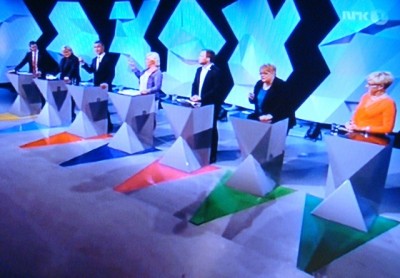Linguists investigating the development of the Norwegian language have found that more Norwegians are speaking faster and less clearly than ever. That’s bad news for newcomers to Norway who already may be struggling to learn and comprehend the local language.

Experts agreed that young Norwegians, particularly women, appear to speak faster than in earlier decades, but when it comes to the media and political arena, there’s been more of a shift in style than a change in speed.
“We can manage to make a maximum of 20 language sounds per second,” said Olaf Husby, an associate professor in the language and communication studies department at the Norwegian University of Science and Technology in Trondheim (Norges teknisk-naturvitenskapelige universitet, NTNU). “With more than the starting language sounds and words falling out, we gradually get linguistic change. Therefore we use half-a-tenth of a second per sound in rapid speech. Then there are some who take more time to articulate than others.”
Studies looking at links between speech rate to age and gender found women speak more quickly than men, and the young tend to speak faster than older Norwegians. Phonetics expert Jørn Almberg told newspaper Aftenposten he believed there had been a shift towards faster speech. “It may also have a clean, muscular explanation,” he said. “The young also walk and run faster than the older. But I have the impression that we are talking faster, less articulately and more indistinctly than before.”
Differences in dialect also played a role. In eastern Norway, Østlendinger people have 23 consonant and 18 vowel sounds. On the west coast, people who speak Bergen dialect have 17 consonant sounds, while Trønder people in the middle of Norway have 27 consonant sounds. Both the dialects and the speed at which Norwegians speak pose a challenge to foreigners in Norway who try to communicate in the local language. Norwegians who speak more slowly and clearly are generally easier for new residents of Norway to understand.
Fast-talking politicians
Within the political and media spheres, however, the linguists told Aftenposten they did not believe politicians spoke faster now than in 1960, when the then-prime minister Einar Gerhardsen officially opened the first state television (NRK) broadcast. They said rather there had been a shift in context, style and appropriate behaviour.
“It is not clear that politicians on TV talk faster now than before,” said Almberg. He said established and respected politicians like the former prime minister Jens Stoltenberg, current leader Erna Solberg and Finance Minister Siv Jensen were examples of people who don’t speak quickly, but have other techniques to hold the floor. “An example of the opposite is the Liberal’s (Venstre) Abid Raja.” Almberg said. “Inexperienced politicians speak faster than the more experienced.”
The experts said in Gerhardsen’s era, televised debates were more peaceful, words were well-chosen, and well-spoken politicians waited politely for their turn. Now they said the temperature has heated up, with speakers battling to hold the microphone. The changing context of debates has changed the way politicians speak and audiences hear.
“In a discussion today, especially debates on television, it is more than ever a fight to hold the floor,” Almberg said. “Talking fast is a technique many people use to hold the floor as long as possible or to say the most. You see as well that many take a deep breath mid-sentence instead of at the end so as not to lose the floor.”
Style over substance
Another factor was that television had become more ubiquitous. There are now many more channels and more people on TV, making it more informal. “The discussion of political issues in public was calmer before,” said Husby. “The style was more formal, perhaps there were more artful breaks, gazes out into the hall were longer. Previously, there was a well-mannered appearance on television, as you still have in Parliament and at the pulpit. Now, rapid speech, belonging to familial and close relationships, has been introduced in an arena where it might not belong.”
Husby said the formal, solemn style of yesteryear still exists on special occasions, like on Norway’s National Day, during ceremonies or after the terror attacks of July 22, 2011. “You could see the difference between Stoltenberg’s speech after July 22 and the heated debates against Siv Jensen,” he pointed out. “The speed is definitely different, but this is not an indication that the Norwegian language is changing. The situation changes and therefore the linguistic performances does as well.”
newsinenglish.no/Emily Woodgate

